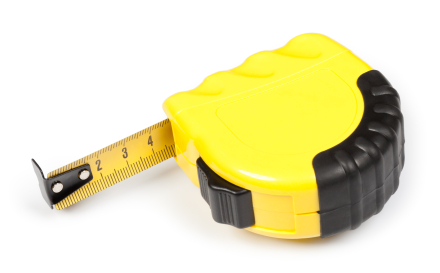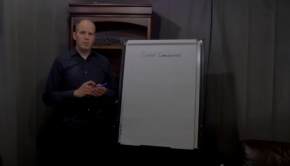 The first step in preparing for a test is to understand what it is about. From the exam handbook, it is clear that a large portion of the CTS test (currently 60%) is focused on designing systems based on real world conditions.
The first step in preparing for a test is to understand what it is about. From the exam handbook, it is clear that a large portion of the CTS test (currently 60%) is focused on designing systems based on real world conditions.
So…You will need to know how to design an AV system. Great, but what exactly does that involve?
Note that I do understand that a design can be based off a specification or a written request, without ever seeing a site or meeting with a customer. My goal here is to give you a real world process of a typical scenario.
Step 1 – Visit the site and survey the conditions
When onsite, you want to be able to take detailed notes about the space. Take pictures (make sure to ask if it is OK) to remind yourself of certain things that you might forget to write down. Often times you will get back to the office and realize you forgot to ask or check one thing and if you’re lucky, one of the pictures you snapped has the answer. Use a tape measure and record critical distances such as proposed screen to projector, screen size, ceiling height, and other relevant data. You can often approximate room size by counting ceiling tiles (typically 2′ x 4′ but can vary). Room size can help later when trying to come up with a solution. It the job looks like it will be an intensive design, you may want to see if you can get some of the site construction drawings – start with the reflected ceiling plan, which can be used to determine where everything will fit in the space.
Step 2 – Get feedback from the customer
There are thousands of ways to configure a room with AV equipment. The key is to find out what the customer’s requirements are. How do they want to use the space? What do they use the room for most of the time? You want to come up with a solution that will satisfy the main usage of the room. Using all this information will help you come up with a workable design that fits the customer’s vision. As the AV Integrator, you need to be able to provide an AV solution for the space that is technically sound and also within budgetary constraints.
Step 3 – Come up with a plan
What technology will fit the requirements? You should have a pretty good idea of different technologies available and be able to narrow down what type of equipment should be specified for the job. As much as 10% of the total test is based on system design, so you need to have at least a working knowledge of how to do a basic design. (the most complex systems are best left to design engineers who often work closely with the manufacturers to create an elegant solution to a problem). There seem to be a fair amount of calculation based questions, which might be a bit unnerving but should be manageable with a little preparation.
Based on the weighting of system design in the CTS exam, a lot of the information I will post on in the future will involve specific system design concepts. If you have an area you would like to see covered, feel free to leave a comment below.
Disclaimer: CTS is a registered trademark of Infocomm International. ProAVSchool.com is not affiliated, approved or endorsed by Infocomm International.




